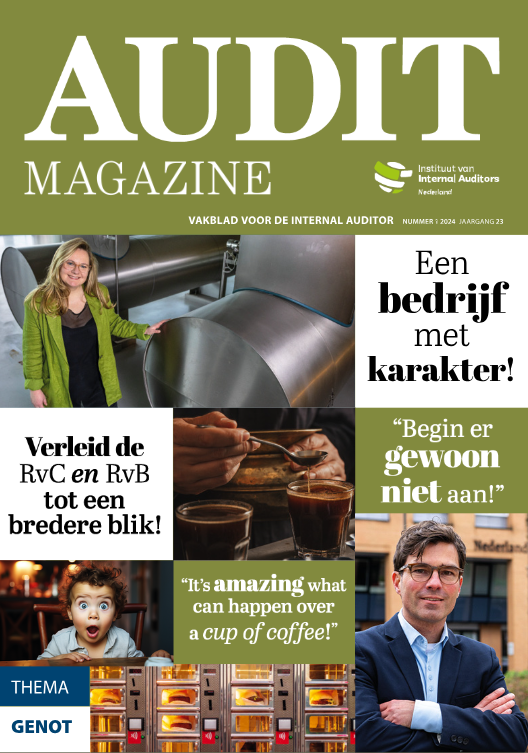Read Internal Auditor February 2020 online
The digital edition of Internal Auditor is a fully replicated version of the magazine, allowing IIA members to view entire issues and flip through each page — just like the print edition. in the Member Service you can opt-in for the magazine; choose edit personal data and check on the box at the bottom of the web page.
No profession stays the same. If it doesn’t evolve, it doesn’t survive. In today’s changing business world, continuous skills development is key to succeeding. Professionals need to hold on tight, as keeping skills current can be a dizzying ride.
Take magazine publishing, for example. Last week, I interviewed IIA President and CEO Richard Chambers for a video for InternalAuditor.org. Ten years ago, hosting a video would not have been part of my job description. Once solely a printbased industry, magazine publishing has transformed into a mix of print and digital to address the many ways readers consume content. Digital magazine publishing requires a different set of editing skills, as well as knowledge of apps, video, podcasts, etc. From someone who is evolving with the profession, it has been, and continues to be, a fun and challenging experience.
The same can be said about the internal audit profession. Once a profession of ticks and ties, today’s internal auditors are consultants and advisors to their organizations on topics ranging from strategy to cybersecurity. Their required skills have grown immensely. “There is a redefinition of capabilities grounded in three dimensions:
business acumen, analytics acumen, and technology acumen,” says Mike Maali, a partner at PwC, in “Forming Today’s Internal Audit Function” (page 36).
In the same article, author Russell Jackson compares staffing internal audit with all of those requisite capabilities to solving a Rubik’s Cube. “But just as a Rubik’s Cube can be solved, there is a solution for internal audit department staffing,” he writes. According to Chambers, focusing on the gaps is the start of that solution.
“What it really involves is constantly looking at your capabilities as an internal audit department compared with the risks that the organization faces and the demands that are being placed on it,” he says in our recent InternalAuditor.org video interview. He tells me departments then need to develop talent internally or
come up with a good sourcing strategy to address the gaps.
That strategy could involve gig employees, temporary hires brought on for a project or to address a specific short- or long-term need, or some other limited solution. “We’re seeing more organizations using rotational or guest auditor programs to engage professionals with diverse areas of expertise outside of internal audit to help address the varied challenges that core internal audit work presents,” says Sandy Pundmann, U.S. internal audit leader at Deloitte, in “Eye on Business” (page 60).
This issue is chock-full of advice from experts on how audit functions and internal auditors can grow and expand their knowledge to thrive in today’s business environment. As in other professions, it’s a challenging proposition. My advice? Enjoy the ride.







